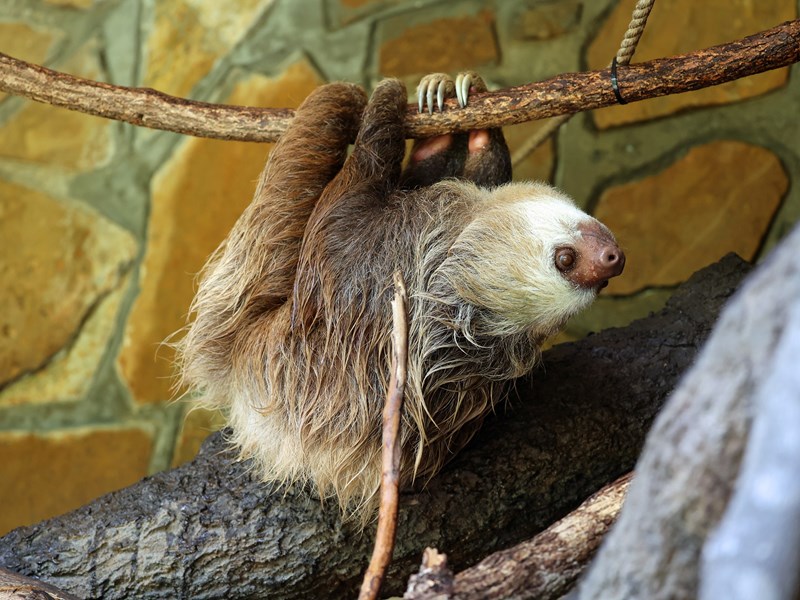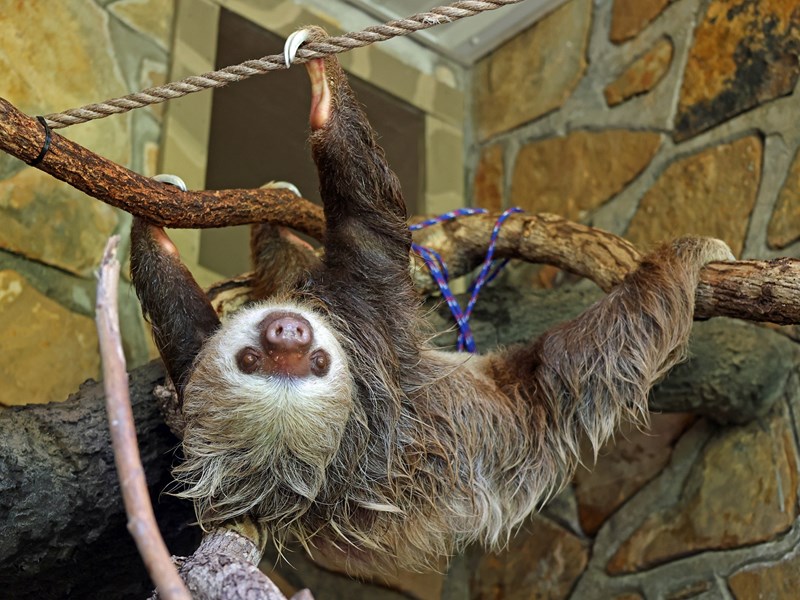Sloths
Sloths are known for their slow-moving nature and unique adaptations to life in the trees. These arboreal mammals are found in the rainforests of Central and South America, where they spend most of their lives hanging upside down from branches. Sloths have a slow metabolism and spend the majority of their time resting or sleeping, conserving energy to digest their fibrous diet of leaves and vegetation. Despite their sluggish appearance, sloths are skilled climbers and excellent swimmers.




Two-Toed Sloth
Two-Toed Sloths, also known as Linnaeus’s Sloths, are native to the forests of Central and South America. These arboreal mammals are characterized by their slow-moving nature, hook-like claws, and distinctive facial markings. Despite their name, Two-Toed Sloths actually have three toes on their hind limbs. They spend the majority of their time hanging upside down from tree branches, feeding on leaves, fruits, and flowers. At the Little Rock Zoo our sloth is housed with the White faced Sakis (exhibit next to the capuchins) on the East side of the Primate/Reptile House. Look high as they like to climb!
- Sloth body temperature fluctuates greatly ranging from 75°F to 91.5°F.
- Sloths often appear green due to symbiotic algae living on their hair.
- Sloth bodies are made for hanging upside down. Their hair hangs down from their stomach rather than back and their organs are fixed in place to prevent them from suffocating.
- Sloths carry 1/3 of their weight in waste matter.
IUCN lists as a species of least concern. The major threat they face is deforestation and habitat fragmentation.
Photos by Karen Caster



